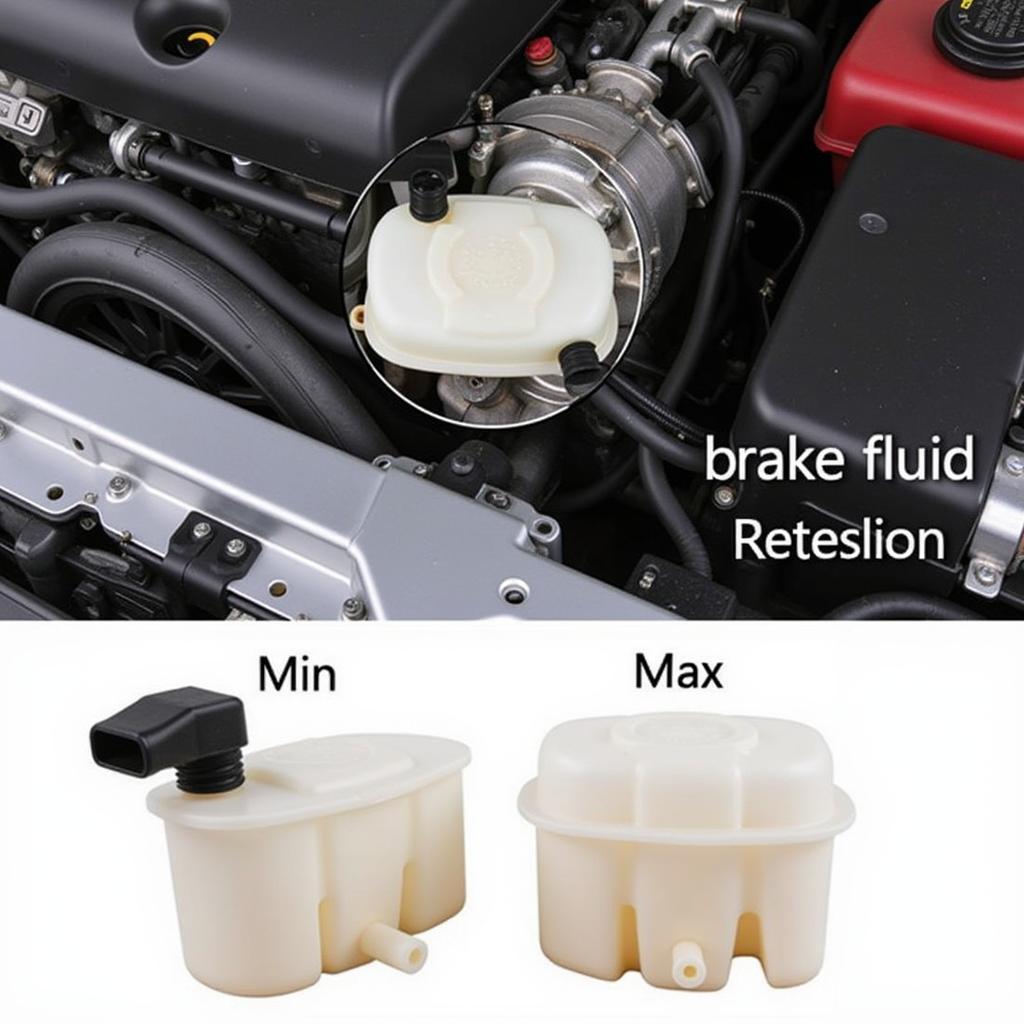A flashing brake warning light on your 2007 Chevrolet Malibu is a serious safety concern that should never be ignored. This issue signifies a potential problem with your braking system, requiring immediate attention to ensure your safety and the safety of others on the road.
While a flashing brake light can be alarming, understanding the potential causes can help you diagnose the issue and determine the necessary course of action.
Common Causes of a Flashing Brake Light on a 2007 Malibu
There are several reasons why your 2007 Malibu’s brake warning light might be flashing. Here are some of the most common culprits:
1. Low Brake Fluid Level
One of the most common and straightforward causes of a flashing brake light is low brake fluid. Brake fluid is the lifeblood of your car’s braking system, and when the fluid level drops, it can trigger the warning light.
What to do:
- Check your brake fluid level. Locate the brake fluid reservoir under the hood, typically on the driver’s side.
- Inspect the fluid level. The reservoir should have a “Min” and “Max” marking. If the fluid is below the “Min” line, it needs to be topped up.
- Add brake fluid if needed. Ensure you use the correct type of brake fluid recommended for your Malibu. Consult your owner’s manual if you’re unsure.
- Inspect for leaks. If you find yourself adding brake fluid frequently, there might be a leak in the system that needs immediate professional attention.
2. Worn Brake Pads
Brake pads are designed to wear down over time. When they reach a certain level of wear, a sensor within the brake pad will trigger the brake warning light to signal that it’s time for a replacement.
What to do:
- Schedule a brake inspection. If you suspect your brake pads are worn, take your Malibu to a qualified mechanic or dealership for inspection.
- Replace brake pads if necessary. Worn brake pads will significantly compromise your braking distance and overall safety.
3. Faulty ABS Sensor
The Anti-lock Braking System (ABS) prevents wheel lockup during hard braking, ensuring vehicle stability and control. A faulty ABS sensor can disrupt the system’s functionality, triggering the brake warning light.
What to do:
- Seek professional diagnosis. Diagnosing and repairing ABS sensor issues requires specialized equipment and expertise.
- Consider professional repair. Depending on the severity of the issue, the faulty sensor may need to be replaced.
4. Malfunctioning ABS Module
The ABS module is the brain of your anti-lock braking system. If the module malfunctions, it can lead to various issues, including a flashing brake light.
What to do:
- Consult a qualified mechanic. Diagnosing ABS module problems can be complex. A professional can accurately pinpoint the issue and recommend the best course of action.
5. Electrical Problems
Electrical issues, such as a blown fuse, loose wiring, or a faulty brake light switch, can also trigger a false warning signal.
What to do:
- Check your fuses. Locate the fuse box and refer to your owner’s manual to identify the fuse related to the brake lights. Replace the fuse if necessary.
- Inspect for loose wiring. Carefully check the wiring connections around the brake pedal and master cylinder for any loose or damaged wires.
- Consider professional diagnosis. If you cannot identify the source of the electrical problem, consult a qualified mechanic for further diagnosis.
Why You Should Never Ignore a Flashing Brake Light
Ignoring a flashing brake warning light can have serious consequences:
- Increased stopping distance: Driving with worn brake pads or low brake fluid can significantly increase your stopping distance, putting you at risk of an accident.
- Complete brake failure: In extreme cases, ignoring brake system problems can lead to complete brake failure, leaving you with little to no braking power.
- Expensive repairs: Addressing brake issues promptly can help you avoid more costly repairs down the line.
Tips for Preventing Brake Problems
Here are some proactive measures you can take to prevent brake issues:
- Regular brake inspections: Schedule a brake inspection at least once a year or as recommended in your Malibu’s owner’s manual.
- Timely brake pad replacement: Don’t wait until your brake pads are completely worn down. Replace them at the recommended intervals or when you notice signs of wear.
- Be mindful of driving habits: Aggressive driving with frequent hard braking can accelerate brake wear. Adopt a smoother driving style to prolong the life of your brakes.
Conclusion
A flashing brake warning light on your 2007 Chevrolet Malibu is a clear sign that something is amiss with your braking system. Ignoring this warning can compromise your safety and lead to costly repairs. By understanding the potential causes outlined in this guide and taking prompt action, you can ensure the safety and reliability of your Malibu’s braking system.

